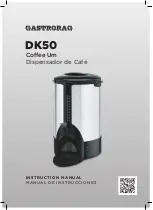LabCo 550.001.305, User Manual
Get your hands on the LabCo 550.001.305 User Manual for free download on manualshive.com. This comprehensive manual is essential for understanding the features and functions of your device. Don't wait, download your manual today to make the most out of your LabCo 550.001.305 product.

















